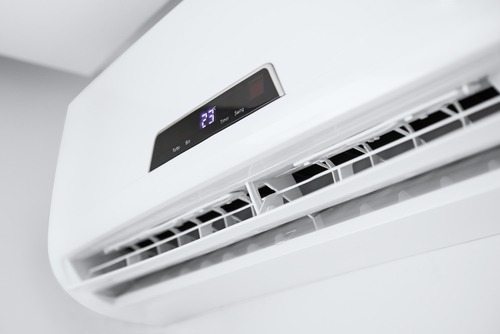NREL study examines the expected increase in greenhouse gas emissions from air conditioners

Research conducted by National Renewable Energy Laboratory (NREL) and Xerox PARC has found that greenhouse gas emissions from air conditioners are expected to climb as economic growth drives efforts to control temperature and humidity.
The increasing need to cool the air is both a cause and an effect of climate change. Even a small amount of moisture in the air can cause people to feel uncomfortable and even damage buildings via mold and mildew. However, controlling indoor humidity through commercially available air conditioning technologies impacts the environment in three ways. Air conditioners consume a large amount of electricity. They leak CFC-based refrigerants with a global warming potential 2,000 times as potent as carbon dioxide. The manufacturing and delivery of these systems release greenhouse gases.
The researchers found that air conditioning is responsible for the equivalent of 1,950 million tons of carbon dioxide released annually — or 3.94 percent of global greenhouse gas emissions. Of that figure, 531 million tons come from the energy expended to control the temperature and 599 million tons from removing humidity. The balance comes from leakage of global-warming-causing refrigerants and emissions during the manufacturing and transport of the air conditioning equipment.
In summary, they said that managing humidity with air conditioners contributes more to climate change than controlling temperature does. And the problem is expected to worsen as consumers in more countries — particularly in India, China, and Indonesia – install more air conditioners.
“It’s a challenging problem that people haven’t solved since air conditioners became commonplaces more than a half-century ago,” Jason Woods, an NREL senior research engineer and co-author of the study, said. “It’s a good and a bad thing. It’s good that more people can benefit from improved comfort, but it also means a lot more energy is used, and carbon emissions are increased.”
His co-authors from NREL are Nelson James, Eric Kozubal, and Eric Bonnema. The collaborators from Xerox PARC, an R&D company working on ways to remove humidity more efficiently from the air, are Kristin Brief, Liz Voeller, and Jessy Rivest. The research appears in the journal Joule, titled “Humidity’s impact on greenhouse gas emissions from air conditioning.”
In their analysis, the researchers considered the impact of the changing climate on air conditioner energy use by 2050. For example, the study projects air conditioner energy use to increase by 14 percent in the hottest climate studied, Chennai, India, and 41 percent in the mildest, Milan, Italy, by 2050.
“We’ve already made the existing, century-old technology nearly as efficient as possible,” Woods said. “To get a transformational change in efficiency, we need to look at different approaches without the limitations of the existing one.”
The researchers said new technologies that split cooling and humidity control into two processes show potential to improve efficiency by 40 percent or more. One avenue could be liquid desiccant air conditioning technologies that NREL is currently developing with many partners, such as Emerson and Blue Frontier. The use of liquid desiccants fundamentally changes the way humidity is controlled and has the potential to reduce cooling-energy emissions by 42 percent in 2050.
The Department of Energy’s Building Technologies Office funded the research. NREL is the DOEʻs primary national laboratory for renewable energy and energy efficiency research and development.
